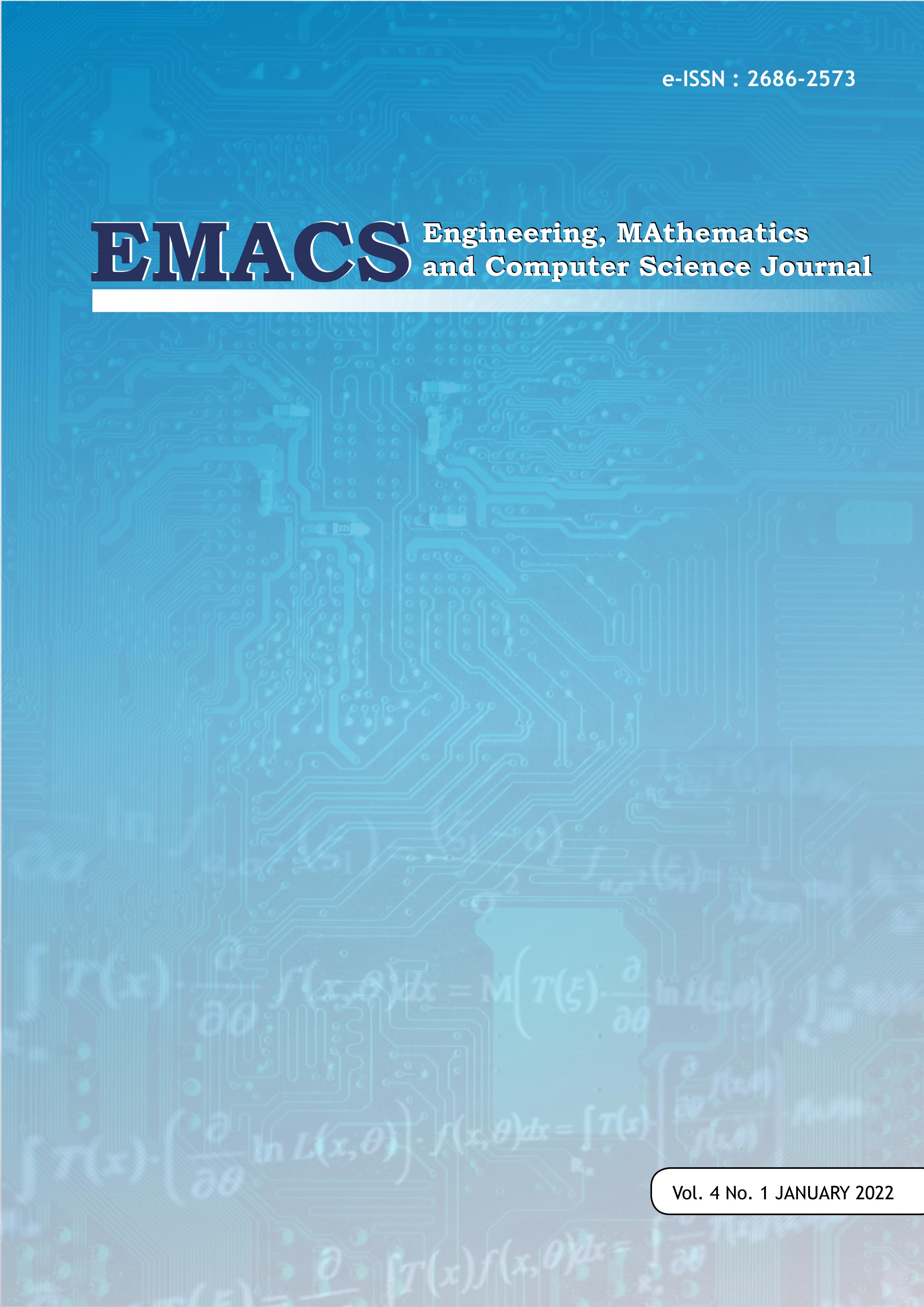Euler Formula Derivation
DOI:
https://doi.org/10.21512/emacsjournal.v4i1.7999Keywords:
Euler, formula, norm, argumentAbstract
This paper discusses the derivation of Euler's formula. To obtain this model, the writer derives Euler's formula from ex+iy by first finding the norm and argument of ex+iy. In this derivation we substitute the norm and argument of ex+iy on complex numbers in polar coordinates, until we get the derivation of Euler's formula.
References
Anton, H., Rorres, C. (2014). Solutions for Elementary Linear Algebra: Applications Version 11th. Published simultaneously in Canada.
Bondan, A. (2001). Aljabar Linier. Jakarta: Penerbit Universitas Trisakti.
Briggs, W., Cochran, L., et al. (2018). Calculus: Early Transcendentals Third Edition. Pearson Published.
Cherney, D., Denton, T., Thomas, R., Waldron, A. (2013). Linear Algebra. Attribution-NonCommercial-ShareAlike 3.0 Unported.
Gazali, W. (2005). Matriks dan Transformasi Linear. Yogyakarta: Penerbit Graha Ilmu.
Gazali, W., Soedadyatmodjo (2005). Kalkulus. Yogyakarta: Penerbit Graha Ilmu.
Gazali, W., Soedadyatmodjo (2007). Kalkulus Edisi 2. Yogyakarta: Penerbit Graha Ilmu.
Hefferon, J. (2020). Linear Algebra with Applications, 4th edition. Vermont USA. : https://joshua.smcvt.edu/linearalgebra/
L. Peterson, G., S. Sochacki, J. (2002). Linear Algebra and Differential Equationss. Addison Wesley Publishing Company.
Larson, R., H. Edwards, B. (2017). Calculus. CENGAGE Published.
Leon, S. (2020). Linear Algebra with Applications, 10th Edition. Published Pearson.
Madiana, A.M. (2000). Matriks dan Ruang Vektor Edisi Pertama. Yogyakarta: Penerbit Universitas Atma Jaya Yogyakarta.
Purcell, V., (2022). Calculus 9th Edition. Prentice Hall Published
STEWART, J. (2008). CALCULUS Early Transcendentals Sixth Edition. McMASTER UNIVERSITY: Thomson Brooks/ Cole.
Strang, G. (2011). Linear Algebra. Cambridge (USA) : MIT Press.
Downloads
Published
How to Cite
Issue
Section
License
Copyright (c) 2022 Engineering, MAthematics and Computer Science (EMACS) Journal

This work is licensed under a Creative Commons Attribution-ShareAlike 4.0 International License.
Authors who publish with this journal agree to the following terms:
- Authors retain copyright and grant the journal right of first publication with the work simultaneously licensed under a Creative Commons Attribution License - Share Alike that allows others to share the work with an acknowledgment of the work's authorship and initial publication in this journal.
- Authors are able to enter into separate, additional contractual arrangements for the non-exclusive distribution of the journal's published version of the work (e.g., post it to an institutional repository or publish it in a book), with an acknowledgment of its initial publication in this journal.
- Authors are permitted and encouraged to post their work online (e.g., in institutional repositories or on their website) prior to and during the submission process, as it can lead to productive exchanges, as well as earlier and greater citation of published work.
USER RIGHTS
All articles published Open Access will be immediately and permanently free for everyone to read and download. We are continuously working with our author communities to select the best choice of license options, currently being defined for this journal as follows: Creative Commons Attribution-Share Alike (CC BY-SA)





